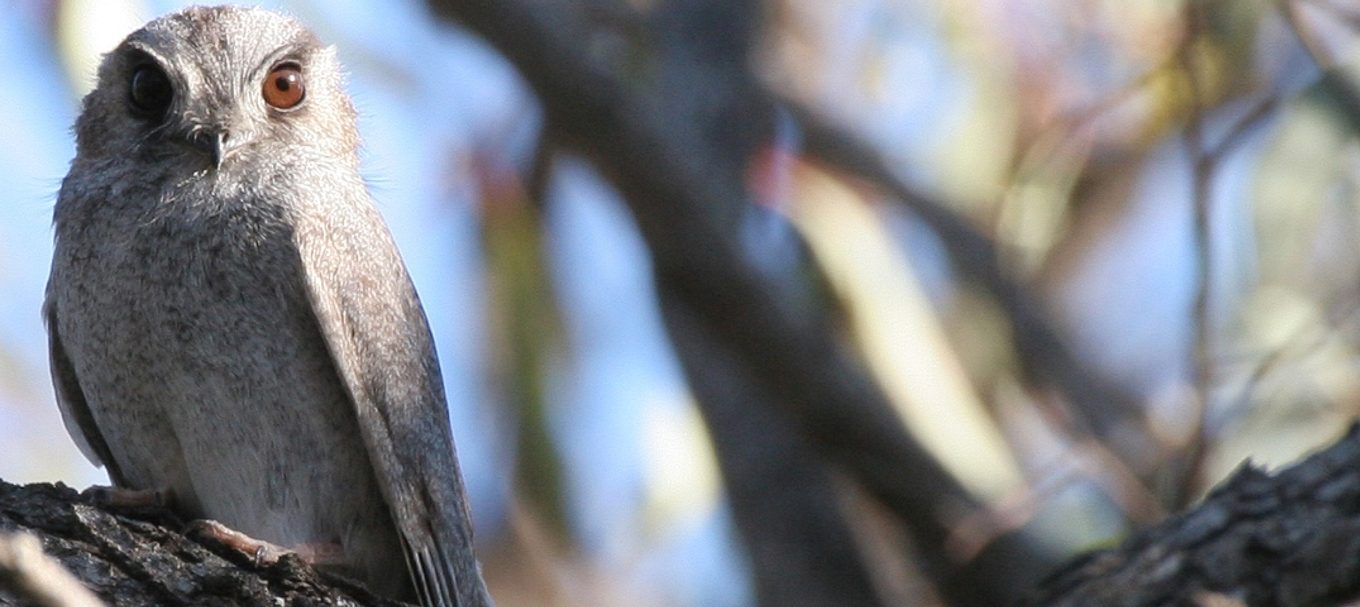
Find out how the Australian owlet-nightjar is faring post-bushfire
Did you know that since the 2019-20 summer bushfires, extensive wildlife monitoring is underway on Kangaroo Island?
National Parks and Wildlife Service South Australia is using motion sensor-activated cameras for surveys, which help its rangers and ecologists better understand which native and feral animals live in, or pass through, the bushfire-affected area of the island.
Not only do the cameras help the team learn about the common species or those active during the day, but they also capture many nocturnal and cryptic species – like the Australian owlet-nightjar.
The Australian owlet-nightjar is the smallest Aussie nocturnal bird and is common across Australia. It has large brown eyes and a broad bill surrounded by stiff bristles that help guide insects into their mouth.
What does the monitoring reveal about the species?
Prior to the 2019-20 bushfires on Kangaroo Island, there have been only 20 records of the owlet-nightjar on the island, with 18 of them from the western end.
Nightjars are usually only detected by hearing their call at night, and occasionally during daylight hours, but very few people recognise them.
The motion-sensing cameras have recently snapped pictures of Australian owlet-nightjars at two sites in Flinders Chase National Park, on the western end of the island. These records are the first formal ones on the island for 15 years.
How is the species faring post-bushfire?
The 2019-20 summer bushfires severely affected the nightjar habitat on Kangaroo Island, with many old and hollow-bearing trees burnt in the summer bushfires. However, fire can also create new hollows.
The KI Australian owlet-nightjar population is expected to recover as the habitat recovers.
What else is being done to help recovery?
As with the recovery efforts in the bushfire-affected Adelaide Hills, the recovery of the environment on Kangaroo Island will take time and plenty of hard work, but it’s been a collaborative endeavour, with all levels of government as well as local experts, non-government organisations, landholders and the community delivering help in a coordinated way.
National Parks and Wildlife Service South Australia, the Kangaroo Island Landscape Board and the Hills and Fleurieu Landscape Board have taken a number of actions to support native wildlife recovery in partnership with wildlife groups, conservation organisations, landholders and communities.
These actions include:
- on-ground assessments and population counts
- a digital citizen scientist program
- giving nature time and space
- feral animal control
- translocation of koalas to Cleland Wildlife Park
- plantings in bushfire zones
- establishing a Wildlife Recovery Fund
- creating a Wildlife and Habitat Bushfire Recovery Taskforce
- developing a statewide Wildlife and Habitat Bushfire Recovery Plan.
Learn more in our story: 6 months on: How South Australia’s bushfire-affected wildlife is recovering
Do you want to learn more about how SA’s wildlife is recovering post-bushfires? Read about theKangaroo Island dunnartor theglossy black-cockatoo.
(Main image courtesy of Richard Crook)





